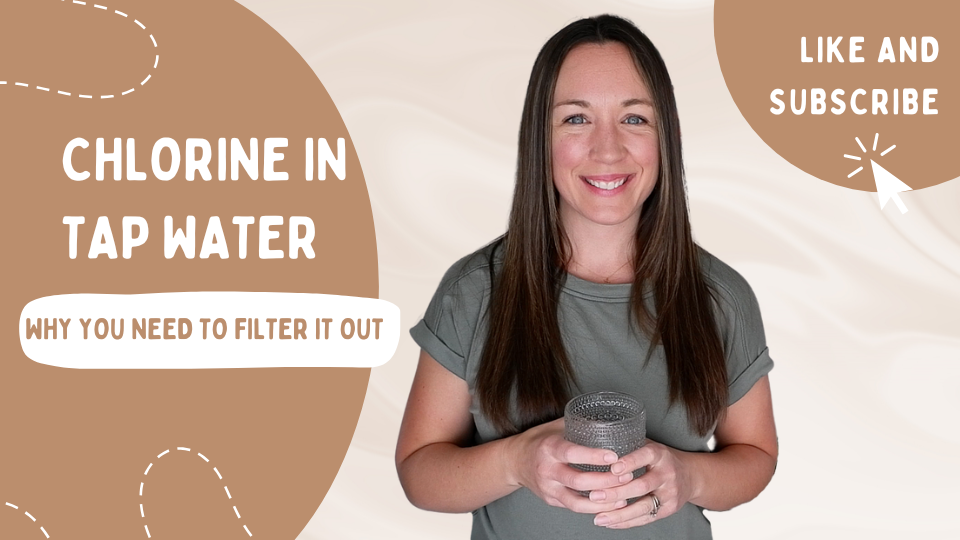
I have always said that WATER is one of our lifelines to health. We use water so many times per day in terms of cleaning or in terms of drinking, it gets hard to keep up with how important it is. And I know for myself I’m so incredibly blessed to be able to just turn on a faucet and get all the water I need, without even having to think about it. However at the same time, I also know that I have to pay attention to the quality of the water in my home. One of the first contaminants I think about is chlorine in drinking water. And more importantly, how to remove chlorine from drinking water.
While there are MANY contaminants in our drinking water, and yes, even the tap water that you get from a city supply, chlorine in drinking water is often one of the first things that people ask about. It’s often one of the most prevalent contaminants in water and is usually in MOST every municipal water supply.
If we’ve been consuming chlorine in drinking water for years and years, you might be wondering what the harm is. I think THIS is one of our biggest hurdles when it comes to water contaminants as well as home toxins. We have to get past the idea that just because it’s always been a certain way or just because we’ve always had our products made of a certain material, it must be safe. This is the type of thinking that got us into this mess of believing that toxins and chemicals were okay for our health and wellness.
Instead, realize that it’s okay to look for a better way, a better material and a healthier option. By doing this in small steps and in little changes we will begin to see the bigger picture of true health and wellness emerge. One way I’m going to help you is to uncover the issues with chlorine in drinking water and how to remove chlorine from water.
HOW WE GET CHLORINE IN DRINKING WATER
First I think it’s important to realize and understand just HOW we get chlorine in drinking water in most cities and areas. Chlorine is added to drinking water in order to disinfect it and kill bacteria and harmful microorganisms in the water. This is necessary because most water comes from underground aquifers and groundwater streams that can be contaminated with bacteria.
The CDC claims that chlorine in water is completely safe to drink as it is dispersed throughout the water and many of us consume “safe levels” of the chemical. This is where I disagree, and I’ll get into why when we uncover some of the health effects of this chemical.
Originally, adding chlorine to municipal water was first used in 1908 to reduce the spread of typhoid fever. Today, Chlorine is used in 98% of all United States Water Utilities. The chlorine based compounds basically disinfect the water and kill microorganisms and bacteria before it’s sent to your home. (Chlorine Information) However, not all microorganisms are harmful to health necessarily.
The chlorinating process is done in multiple steps and addresses different bacteria and waterborne disease prevention at each of these water treatment steps. Chlorine continues to be used as a disinfectant due to the cost effectiveness of this method, even though there may be safer and healthier alternatives out there for disinfection.
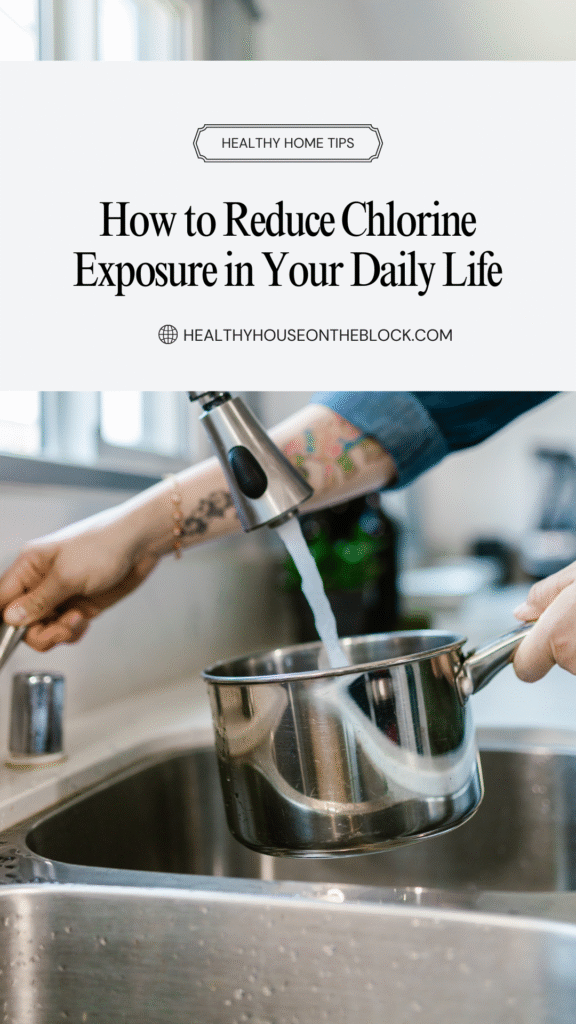
HEALTH RISKS OF CHLORINE IN DRINKING WATER
As I’ve talked about before with other contaminants, there are three ways we come in contact with chlorine in drinking water.
The first is ingestion. This is the most obvious way we come in contact with this contaminant as we consume and drink water on a regular basis as well as cook with it. Consumption of chlorine in drinking water may look different depending on WHO is consuming it. Obviously as adults our bodies can handle larger amounts of chlorine in drinking water in comparison to an infant who is drinking formula made with chlorinated water.
This also is something to keep in mind, as always, if you have kids or babies, their risk of these health effects will be much greater than the risk of a healthy adult.
Consuming drinking water with chlorine has been shown through multiple studies to increase the risk of bladder cancer. It has also been linked to breast cancer and bowel cancer. (STUDY) Other non cancerous effects of chlorine in water leads to irritation of the liver and intestinal tissue.
Another side effect of chlorinated water? Weakened teeth and increased tooth decay. The chlorine appears to corrode teeth due to the hydrochloric acid that is formed and can also cause inflammation to the lining of the mouth (STUDY)
A series of studies performed from 2008 – 2016 also linked chlorine in drinking water to an increased risk of birth defects when consumed by pregnant mothers including heart problems, cleft palate, brain abnormalities and even increase in miscarriages and still born babies. (STUDY)
Additionally, research has shown that chlorinated water can alter gut microbiota composition, potentially impacting digestive and immune health. (Southwest Environmental Health Center)
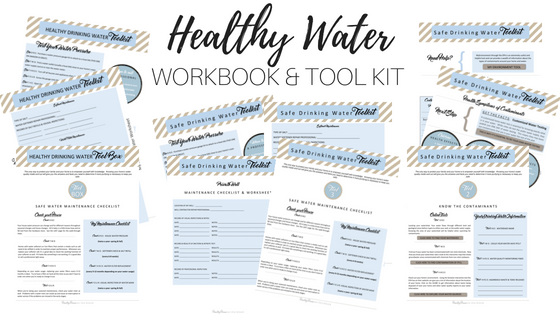
DAILY EXPOSURE TO CHLORINE IN DRINKING WATER
Another way that we come into contact with chlorine through a water source is through both inhalation and absorption. This is most common when we shower or bathe in our unfiltered water at home. Believe it or not, the inhalation of chlorine in drinking water during a hot shower can be JUST as detrimental to health as consuming it. The chlorine byproducts that end up in the water vapor while showering are 100 times more frequent than drinking the same water. The body actually absorbs the volatile chemicals during bathing which increases health risks in several areas.
The first area that chlorinated water can exponentially affect health is the respiratory system. Obvious issues would be inflammation and irritation to the nose and throat membranes. But it also affects the lungs and can trigger bronchial asthma as it allows the passage of allergens. Increased risk for asthma and allergies is a main concern when it comes to inhalation of water. (STUDY)
Skin and hair are also areas of our bodies that can really be damaged by the effects of chlorine in drinking water. Chlorine strips the skin of normal oils and can cause rashes and drying in both hair and skin. But chlorine can also advance the age of free radicals inside the body, mainly the skin. This can increase the risk of melanoma and skin cancer. It also advances the process of aging skin. (STUDY)
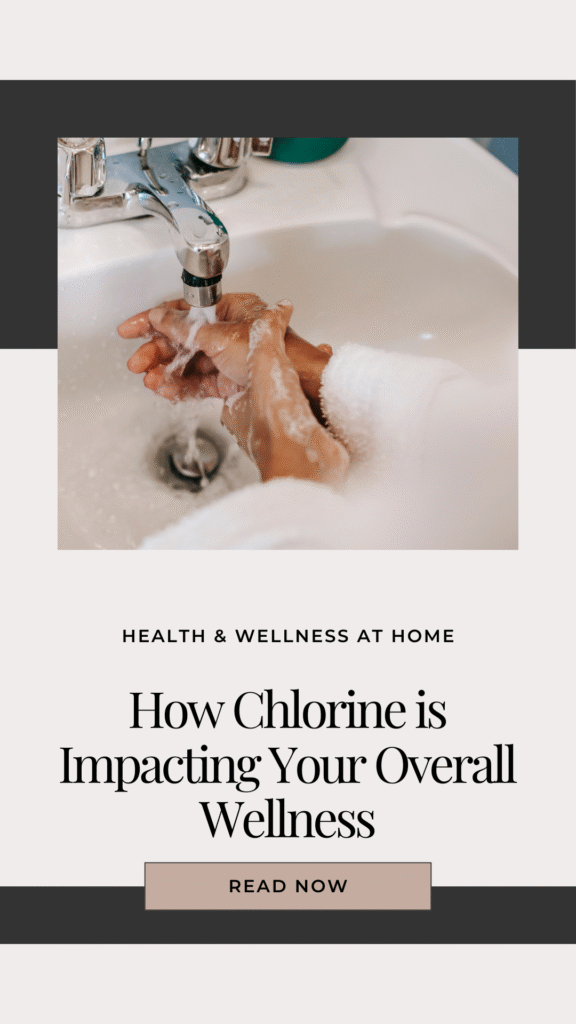
HOW TO REMOVE CHLORINE FROM WATER
Now that we understand the health effects of chlorine in drinking water, it’s important to understand HOW to get rid of these contaminants.
I think the most important thing to remember about chlorine in drinking water is that not only are health effects present from DRINKING the water, but also from INHALATION and ABSORPTION of the water that contains chlorine.
This means you either need a whole house filter or you need a chlorine filter in multiple places. (My Healthy Water Toolkit gives you ALL the information you need about filters and water contaminants when you’re ready to get one for your house)
Carbon Filters: An activated carbon filter (either in a pitcher or whole house form) can be used to filter out small amounts of chlorine. It reduces the contaminant and neutralizes it, but in order to remove it you would need to filter the water for a long period of time.
Reverse Osmosis: An RO water filter system is extremely common and effective when it comes to removing not only chlorine but other contaminants from drinking water. A multistage RO system is best, however most of these systems are just present at ONE faucet for drinking water.
Chemical Neutralization: This is another method that serves to neutralize chlorine in drinking water. Often sodium thiosulfate or other tablets in shower head filters will help to neutralize the chlorine in drinking water.
UltraViolet Light: UV technology is usually paired with other kinds of filters when you’re trying to remove chlorine in drinking water. Most commonly it’s used before a reverse osmosis system. The UV lights safely destroy the chlorine and also sanitize the water from bacteria.
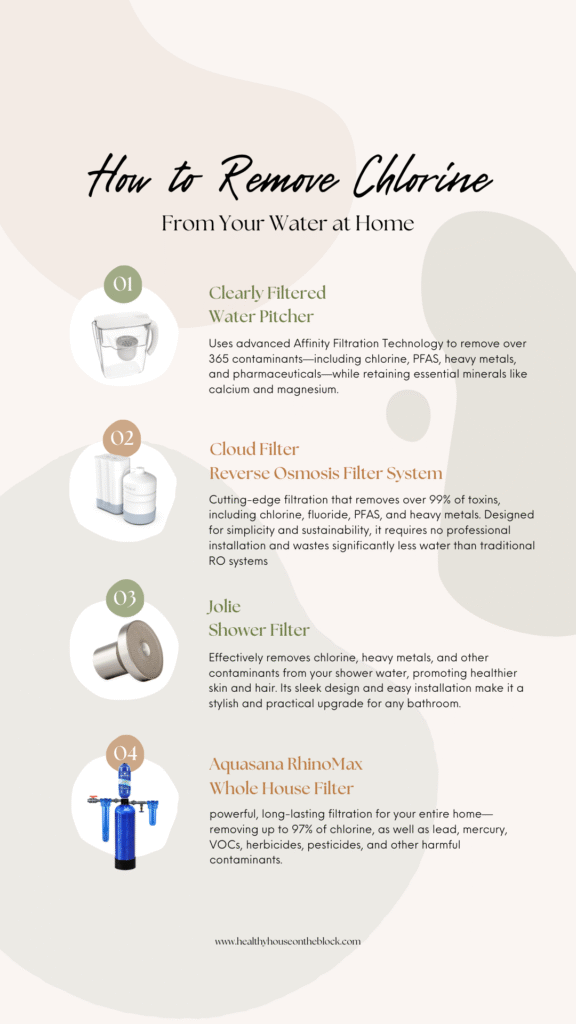
THE BEST CHLORINE WATER FILTERS
- Pitcher Filter: Clearly Filtered
- Reverse Osmosis Filter and Faucet: Cloud Filters
- Shower Filter: Jolie Shower Filter
- Whole House Filter System: Aquasana RhinoMax

Creating a healthy home doesn’t stop at the front door—it flows through every pipe and faucet. As we learn more about how substances like chlorine can impact our bodies—not just through drinking water, but also through bathing—it becomes clear how powerful these small, informed choices can be. The good news? It doesn’t have to feel overwhelming. Whether it’s installing a simple filter or planning for a more comprehensive system down the road, every step you take toward reducing toxins is a step toward wellness.
At Healthy House on the Block, I believe that you deserve to feel confident in the choices you make for your home and your family. With the right tools and knowledge, you can create a space that supports your health from the inside out. You’re not alone in this journey—and even small changes can make a big impact.
Share this:
- Click to share on Facebook (Opens in new window) Facebook
- Click to share on LinkedIn (Opens in new window) LinkedIn
- Click to share on Reddit (Opens in new window) Reddit
- Click to share on Pinterest (Opens in new window) Pinterest
- Click to print (Opens in new window) Print
- Click to share on X (Opens in new window) X





Pingback: PFAS In Water and How to Remove Forever Chemicals